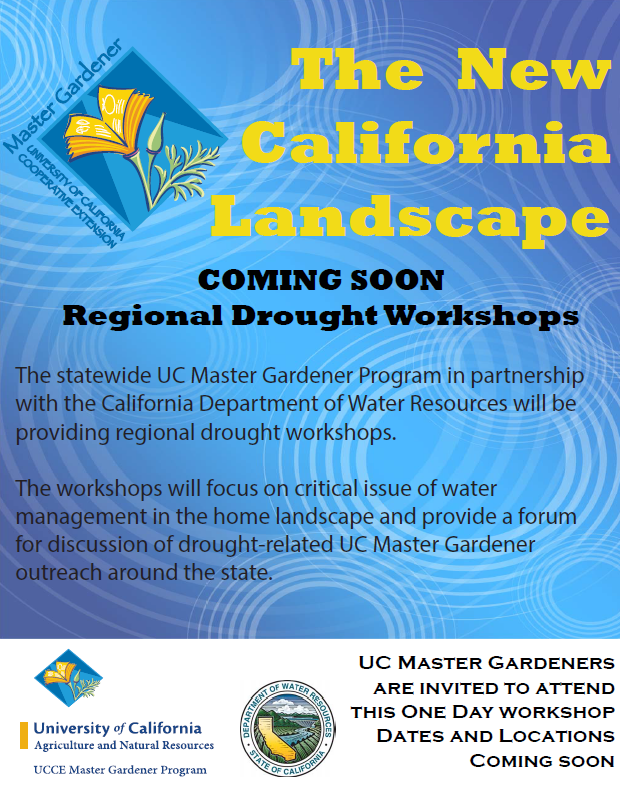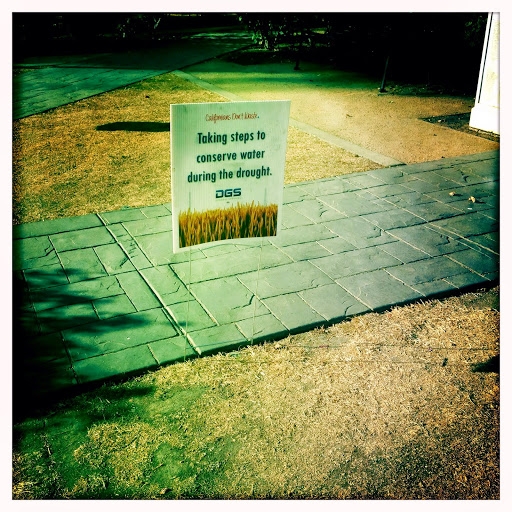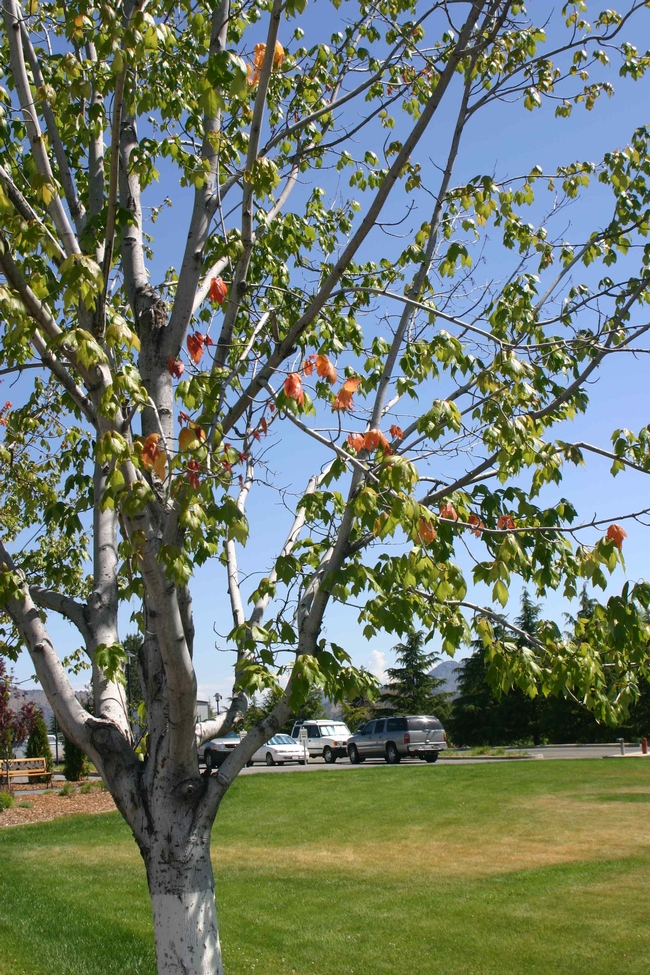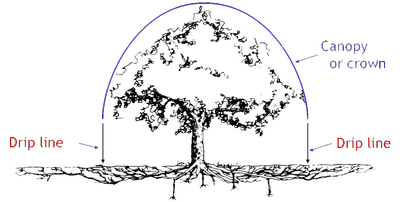- Author: Lauren Snowden
The Statewide UC Master Gardener Program in partnership with the California Department of Water Resources has secured funding to provide regional drought workshops. The workshops will focus on the critical issue of water management in the home landscape and provide a forum for discussion of drought-related UC Master Gardener outreach around the state. The statewide office will be looking for interested host counties to work in partnership to roll out these workshops to the UC 
To provide continuing education for UC Master Gardeners, the Statewide UC Master Gardener Program provides regional workshops and trainings. These events are always popular and serve as a place for Master Gardeners to learn new things, refine their skills, interact with University of California scientists, and meet other gardeners. By promoting activities where UC Master Gardeners learn together, the Statewide UC Master Gardener Program ensures that Master Gardeners are up-to-date with the most recent research recommendations from the University of California.
Together, through this series of workshops, the UC Master Gardeners are making a difference! Hope to see you at one of “The New California Landscape” drought workshops!
Tags: Statewide UC Master Gardener Program; Training; Workshop; Drought
- Author: Melissa G. Womack
Standing in the usually snow-packed Sierra Nevada Mountains, Gov. Jerry Brown called for a mandatory reduction of water use across California the beginning of this month. For the first time in the state a required water conservation action has been called, shedding light on the severity of California's drought conditions.
At the direction of Gov. Brown the State Water Resources Control Board will require local water districts to impose a 25 percent water restrictions on all resident's water use.

These new mandatory restrictions have left many home gardeners to wonder what this means for their home landscape.
Reducing Water Use in the Garden
According to The California Garden Web, an informational website about gardening hosted by the UC Master Gardener Program, water use in the home landscape can often be easily reduced by 20 to 40 percent because overwatering is a common mistake by homeowners. Slowly start to reduce water supplied to plants over the course of a few weeks, giving the plants time to adapt to the change.
It is important for residents to remember to not introduce new plants to your landscape during a severe drought. Even California native plants aren't drought-tolerant until they become well established. When water restrictions are lifted and new plants can be introduced, select drought-tolerant varieties appropriate for your climate zone.
Planting in the fall as opposed to the spring allows plants to become established by winter rains. Residents should prioritize water use in their landscape, saving established trees and large shrubs first because they are typically more expensive to replace and require years to mature.

UC Master Gardener Program Offers Help
The UC Master Gardener Program has volunteers across the state, trained by University of California Cooperative Extension (UCCE), available to answer the public's questions about how to save established trees, plants and reduce water use in their yards.
Many of the program's 50 county-based locations offer free to the public hotline services, home irrigation analysis and workshops for the public that are aimed at helping California's residents reduce their water use. Contact a local UC Master Gardener Program for more water saving information and resources.
Trusted Resources
The new second edition of the California Master Gardener Handbook from the UC Division of Agriculture and Natural Resources (UC ANR) is a great resource for drought tips and home landscape water conservation methods. With an extensive chapter dedicated to water conservation methods, best practices for irrigation, plant selection, and tips for protecting water quality in urban landscapes.
Another great option is to use the irrigation worksheet for homeowners that was recently developed by Dr. Loren Oki, CE Specialist, Landscape Horticulture with UC ANR and UC Davis. The worksheet is designed to calculate an irrigation schedule for a landscape zone for one calendar year.
- Author: Melissa G. Womack

Prioritizing Trees for Landscape Water Use
Many residents have been encouraged to reduce water use by turning off their outdoor watering systems, but this may be causing stress to established trees that are becoming increasingly thirsty for water.
In most traditional residential landscapes trees are surrounded by turfgrass. Turfgrass surrounded trees take advantage of the frequent and shallow watering schedule, typically set to help the lawn flourish. When residents eliminate or reduce water for lawns, trees cannot easily adapt to the new water shortage.
“Mature fruit trees and landscape trees are worth saving! Recognizing early signs of drought stress is important because irreversible damage can occur that no amount of watering will correct.” said Janet Hartin, UC Cooperative Extension advisor in a recent article, Save Water, But Also Save Trees During a Drought.
Replacing small plants, lawns and shrubs is easy compared to a large tree which takes years to become established. Saving mature trees during a drought should be a top priority in your landscape water use allocation.
“Two seasons without enough water can result in severe drought stress and even kill a tree,” warned Hartin. “Also, drought-stressed trees are more prone to damage from diseases and insects than non-stressed trees.”
Understanding how to water a tree effectively is important to avoid water waste and to ensure that the tree is receiving the correct amount of water for its survival.
One key factor to successfully watering a tree is understanding what soil type is present. Understanding soil types is an important factor in determining how much water is stored in the ground. For example, sandy soils dry out quickly while clay soils retain more water. Contact your local UC Master Gardener Program to learn how to determine your soil type.

Tree Ring Irrigation Contraption (TRIC)
Recently the Calif. Center for Urban Horticulture (CCUH) at UC Davis, UC Division of Agriculture and Natural Resources (ANR) and Ewing Irrigation devised a unique watering system called the Tree Ring Irrigation Contraption (TRIC). Using previous data from Netafim drip tube tables and from the Irrigation Association Landscape Irrigation Auditor manual, the partners envisioned a possible solution to mitigating drought conditions and the effect on landscape trees. The TRIC is an inexpensive kit that homeowners can put together for around $100 for one large tree.
The TRIC could enable homeowners to adequately water trees to a depth of three feet with confidence, by using the recommended parts and using the TRIC calculator with accurate information. Aside from a recommended parts list, there is a “plug-in” calculator created by Dr. Loren Oki, UC ANR Associate Specialist in Cooperative Extension Landscape Horticulture for UC Davis & UC ANR. The TRIC calculator helps determine the run-time needed for the device.
Learn more by visiting:




